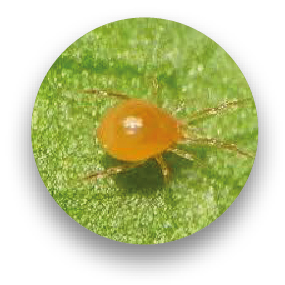How do you recognise spider mites?
Spider mites can seriously damage your crops. They damage the flowers and leaves and put the overall health of the plant at risk.
Spider mites are pests that occur in various crops. Some familiar species include the red spider mite (Tetranychus urticae), bean spider mite (Tetranychus ludeni), carmine spider mite (Tetranychus cinnabarinus) and citrus red mite (Panonychus citri).
The spider mites are classified as arachnids. They have a single, unsegmented body. The spider mite punctures leaf cells to feed and damages flowers and leaves by doing so.
The ornamental value of plants can be greatly reduced by this pest. Spider mites develop rapidly under dry and warm conditions. Silk threads can be seen in severe infestations. This mite is clearly visible due to its red colour.
Life cycle
There are five stages of development in the life cycle of a spider mite. The female spider mite lays eggs (usually on the underside of the leaf), after which the larval stage begins. This larval stage is followed by two nymphal stages, culminating in the adult stage.
Type of damage
- Leaf damage caused by the spider mite puncturing and feeding on the leaf. This has consequences for photosynthesis and ornamental value (especially of leaves and flowers) due to the formation of yellow-brown spots.
- The silk threads that the mite produces reduce the plant’s ornamental value.


